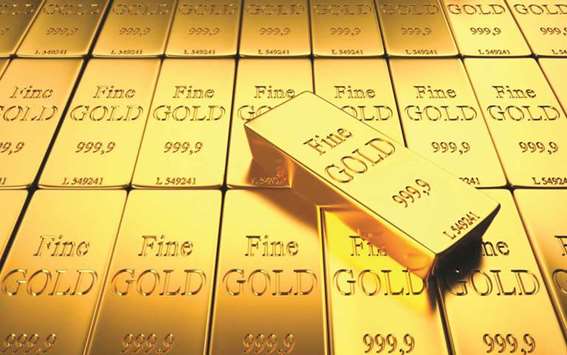It’s not just politics that’s polarised right now. Gold investors are also split down the middle.
A Bloomberg survey of 38 market professionals shows a $700 divide between the most optimistic and most pessimistic forecasts for prices this year.
That leaves the median estimate of $1,290 an ounce at the end of 2018 little changed from current levels.
Here’s what could go right or wrong for the bulls and bears:
Stock prices: As major stock indexes in the US, Europe and Asia are already at or close to record annual closes, and valuations stretched by historical standards, some expect a correction.
That would benefit gold, according to Carsten Fritsch and his colleagues at Commerzbank AG.
However, a continued rally, helped by interest rates that remain low relative to past decades, could sap demand for havens such as gold.
US elections: With investigations into alleged Russian interference in US elections potentially coming to a head in coming months, mid-term voting in November will add to uncertainty over the outlook for Donald Trump’s administration, according to Adrian Day, president of Adrian Day Asset Management.
Yet Trump has managed to weather previous storms thanks to support from his base and Republican lawmakers.
Bitcoin bonanza: If 2017’s hottest asset comes crashing back to Earth, speculative money may be drawn back into gold, according to Walter Otstott, a senior broker at Dallas Commodity Co in the Texas city.
He sees gold peaking at $1,600 an ounce this year, compared with the price on Friday of about $1,297.
With bitcoin trading up about 1,400% last year, tech libertarians and apocalypse survivalists who may have previously bought gold have been lured away by virtual currencies. If bitcoin resumes gains in January, gold could suffer.
North Korea: And talking of the apocalypse, Kim Jong-un’s nuclear ambitions could yet see a revival for haven investments. Bullion dealer GoldCore’s Mark O’Byrne predicts gold could end the year at $1,500 if geopolitics heats up in North Korea or the Middle East. On the other hand, Pyongyang’s missile tests this year have had little effect on the market as investors become inured to the regime’s war of words with President Trump.
Real rates: Inflation and rates, for many analysts, are the biggest factors influencing the gold price. The opportunity cost of holding the metal should increase when rates are high, while its inflation-busting qualities are attractive when policy is loose and the cost of goods is rising.
Yet with the US in a tightening cycle and Europe expected to follow, higher rates haven’t led to gold price declines, even with inflation moderate by historic standards.
Indian demand: The World Gold Council has said Indian demand in 2017 is more likely to be at the lower end of its 650 to 750 metric tonne forecast, close to the seven-year low recorded in the previous year. Traders like Ajay Kumar Kedia of Kedia Commodity in Mumbai are betting consumers in India and China will return to buy more gold in 2018. Then again, they might not.

A Bloomberg survey of 38 market professionals shows a $700 divide between the most optimistic and most pessimistic forecasts for gold prices this year
